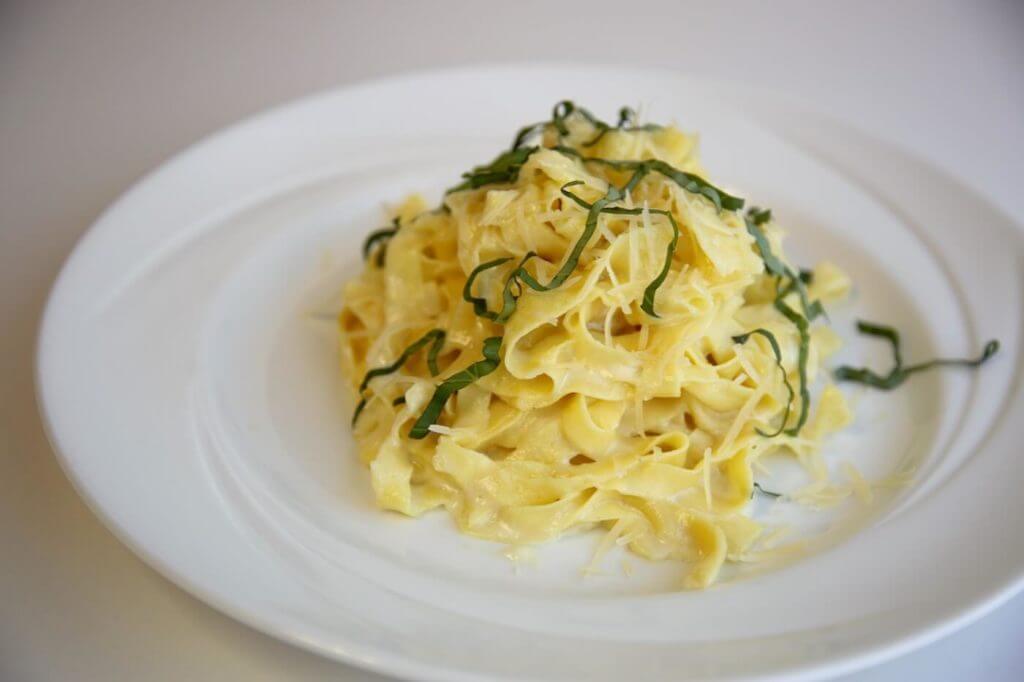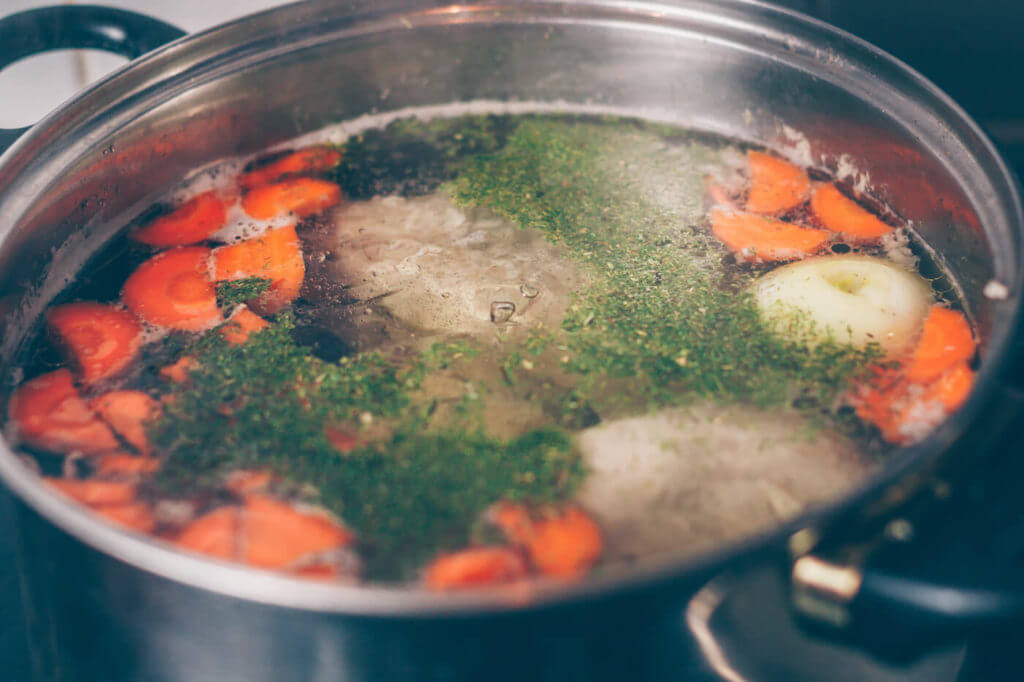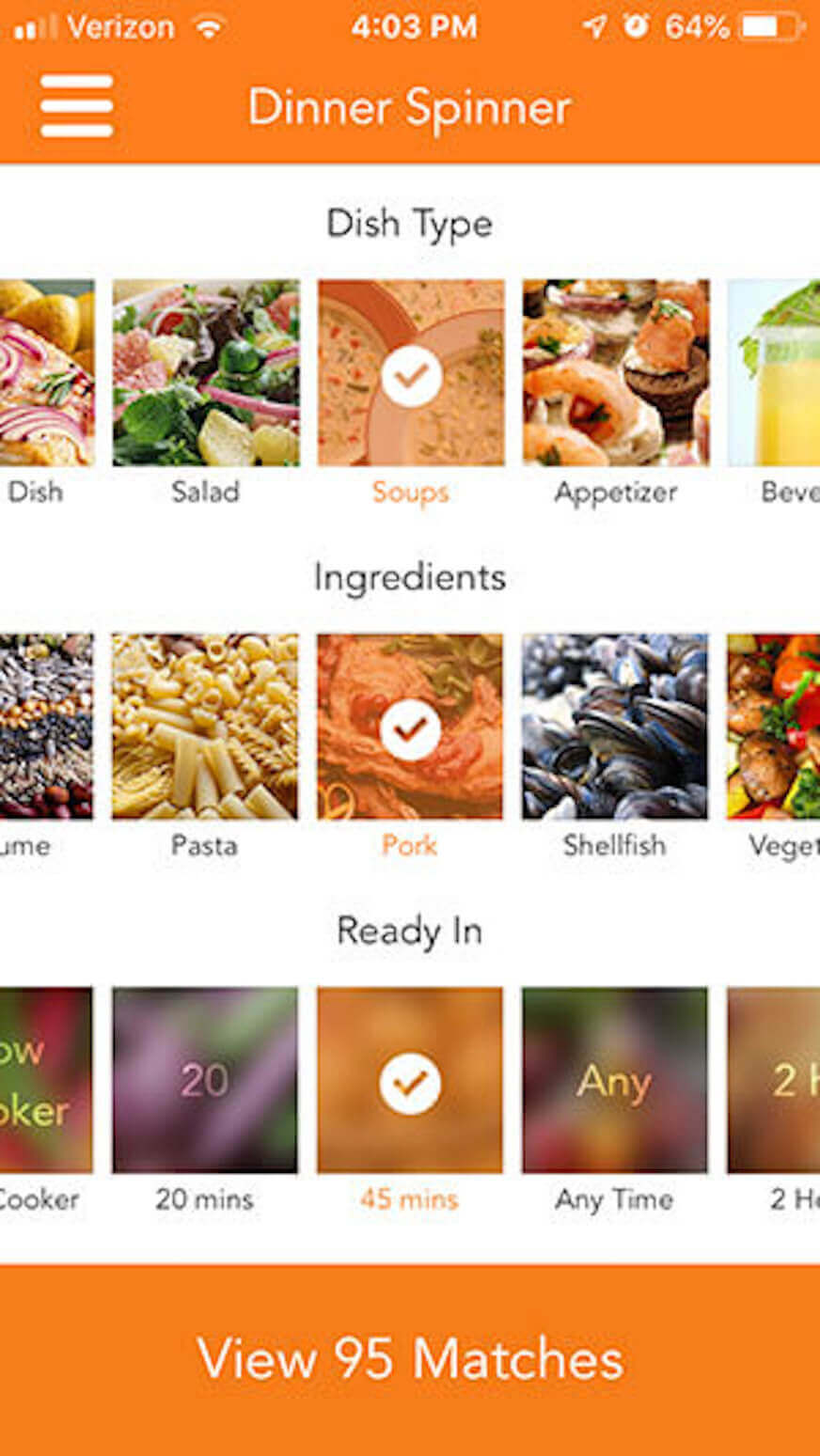One of the five mother sauces, bechamel is a staple of French cuisine. This decadent white sauce forms the base of many other sauces and dishes.
Bechamel is simple to make, with or without a recipe. With enough practice, many culinary students, professional chefs, and even dedicated home cooks can recreate this traditional sauce in mere minutes.
You may be surprised to learn just how versatile a classic sauce like bechamel can be. Here’s everything you’ve ever wondered about bechamel, including where it came from and how to make it.
Origins of Bechamel
The famous chef Auguste Escoffier is often credited with developing the five mother sauces of French cuisine in the 1900s, building on the ideas of Marie-Antoine Carême before him. When Escoffier published Le Guide Culinaire in 1903, he introduced the five mother sauces as we know them today, and explained how to prepare and use them.
These sauces are referred to as mother sauces because they are basic sauces that “give birth” to, or form the basis of, more complex derivative sauces. These may be called daughter, small, or secondary sauces, and these tend to be culturally influenced and more complex in both flavor and preparation.
The mother sauces are tomato, veloute, hollandaise, espagnole, and bechamel sauce. Bechamel gives rise to mostly cream-based secondary sauces.
You don’t have to be a professional chef to have an appreciation for sauces and French cuisine. Through online cooking classes offered by Auguste Escoffier School of Culinary Arts Home Gourmet in partnership with America’s Test Kitchen, you can learn about sauces, classic French foods like baguettes, and so much more.

What Is a Bechamel Sauce?
A bechamel sauce is a white sauce made by combining a roux and whole milk. This roux, a white roux, contains equal parts butter and flour.
Bechamel is made using a few simple ingredients: butter, flour, and milk. Salt and pepper are also important, but other seasonings are optional. Many people use bay leaves, nutmeg, or even lemon to bring depth of flavor to a bechamel.
Uses for Bechamel
Bechamel is often used as a sauce on its own, but it can also be used as the base of another sauce such as a mornay, a cheesy version of bechamel, or a soubise, a bechamel sauce enriched with cooked onions.
In traditional French and Italian recipes, you will see bechamel both standing alone and supporting other sauces or gravies.
By itself, bechamel may adorn a plate of pasta, a serving of cooked vegetables, or a filet of meat or fish. In more complex dishes like au gratins, a layer of bechamel can be used to bind ingredients such as potatoes and cheese together for more richness and texture.

How to Make the Perfect Bechamel
Before you begin cooking, gather your ingredients. The practice of preparing your ingredients and tools before cooking is referred to in French cooking as “mise en place.” This will allow you to control the speed of your cooking to prevent your bechamel from thickening too much or worse, breaking.
The quality of your ingredients is also important, as is often the case in French cuisine. Choose a minimally processed butter with a high fat content for an indulgent, creamy bechamel; European-style butter is often best. Organic milk or milk from grass-fed cows is not necessary, but you may find that you prefer the flavor. And of course, season with your favorite salt.
Try this foolproof recipe to make a bechamel.
Bechamel Sauce: Steps and Ingredients
You will need:
- 2 tbsp butter
- 2 tbsp all purpose flour
- 1 cup milk (room temperature or warm)
- Salt and pepper to taste
To combine, follow these steps:
- Add butter to a medium-sized saucepan and place over medium heat. Allow to melt.
- Sprinkle in flour and whisk constantly, scraping the bottom to prevent burning. Allow butter and flour paste, a white roux, to cook until butter is fragrant, and the smell of flour has dissipated. It should be lightly golden in color.
- Add milk slowly to the roux, whisking constantly until there are no lumps. Let simmer to allow sauce to thicken to almost desired consistency—sauce will thicken as it cools, so don’t simmer too long. Remove from heat.
- Optional: Strain sauce through a chinois or mesh strainer to remove any clumps.
- Season to taste. If sauce is too thick, add warmed milk and whisk. If too thin, simmer longer.
- Serve cooled or hot depending on recipe and preference.

Mastering Sauces and More
As a home chef, being able to create a rich and smooth bechamel for any dish can make you feel triumphant. And if you’re serious about cooking, the French Mother sauces are a great place to start.
As you get more comfortable in the kitchen and explore classic and traditional recipes, you may want to think about making cooking more than a hobby. A culinary degree or diploma from Auguste Escoffier School of Culinary Arts can help lay the foundation for a career as a culinarian.
To learn more about French cuisine and fine dining, read these articles next:
- What Spices Are Used in French Cooking?
- How To Make Velouté
- How To Make Espagnole Sauce
This article was originally published on December 10, 2014, and has been updated.
The post How To Make Bechamel Sauce appeared first on Escoffier Online.









 Modern Day: Carrying the Torch
Modern Day: Carrying the Torch


 SuperCook is probably the best known app for building recipes by selecting a group of ingredients. This platform helps you waste less food and eat fantastic meals. It’s both a website and an app, so use whichever is most convenient for you.
SuperCook is probably the best known app for building recipes by selecting a group of ingredients. This platform helps you waste less food and eat fantastic meals. It’s both a website and an app, so use whichever is most convenient for you. Allrecipes is a popular site that lists recipes by category and makes them easily searchable. Recipes are submitted by the website’s community of passionate, idea-sharing home cooks and then shared with others.
Allrecipes is a popular site that lists recipes by category and makes them easily searchable. Recipes are submitted by the website’s community of passionate, idea-sharing home cooks and then shared with others. With more than 1 million recipes in its database, BigOven is certainly, well, big. The app allows you to get inspired in the kitchen with an ample ‘Ideas’ section. Brainstorm options by browsing through fun categories like “Use Up Leftovers,” which curates recipes based on reusing ingredients.
With more than 1 million recipes in its database, BigOven is certainly, well, big. The app allows you to get inspired in the kitchen with an ample ‘Ideas’ section. Brainstorm options by browsing through fun categories like “Use Up Leftovers,” which curates recipes based on reusing ingredients. Epicurious was developed by Condé Nast Digital, so it offers tremendous value in terms of both form and function.
Epicurious was developed by Condé Nast Digital, so it offers tremendous value in terms of both form and function. French app Magic Fridge (or Frigo Magic) is free to use and boasts almost 5,000 recipes. Like some of the others, you have the option to specify certain diets, such as vegetarian or vegan, to narrow the options it suggests.
French app Magic Fridge (or Frigo Magic) is free to use and boasts almost 5,000 recipes. Like some of the others, you have the option to specify certain diets, such as vegetarian or vegan, to narrow the options it suggests. Cookpad was founded more than 20 years ago in Japan. Now, the app has more than 100 million users in 23 countries. In addition to English, Cookpad is available in Spanish, French, Italian, and 20 other languages.
Cookpad was founded more than 20 years ago in Japan. Now, the app has more than 100 million users in 23 countries. In addition to English, Cookpad is available in Spanish, French, Italian, and 20 other languages. Tasty is an app that incorporates various multimedia to offer a rich user experience. With overhead food videos reminiscent of TikTok and step-by-step instructions you can swipe through, it’s a handy tool for any tech-loving home cook.
Tasty is an app that incorporates various multimedia to offer a rich user experience. With overhead food videos reminiscent of TikTok and step-by-step instructions you can swipe through, it’s a handy tool for any tech-loving home cook. America’s Test Kitchen (ATK) is America’s most-beloved home cook television program, featuring episodes such as, “The Perfect Cookie,” “Just Add Apples,” and “All Chocolate, All The Time.” So it’s no surprise that the ATK app is quickly becoming a digital tool of choice for serious home cooks.
America’s Test Kitchen (ATK) is America’s most-beloved home cook television program, featuring episodes such as, “The Perfect Cookie,” “Just Add Apples,” and “All Chocolate, All The Time.” So it’s no surprise that the ATK app is quickly becoming a digital tool of choice for serious home cooks.
